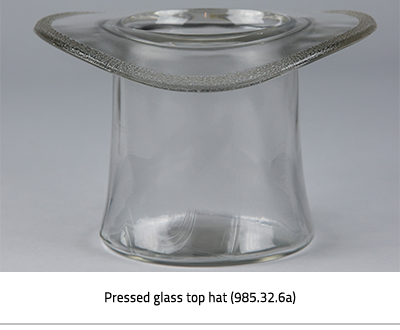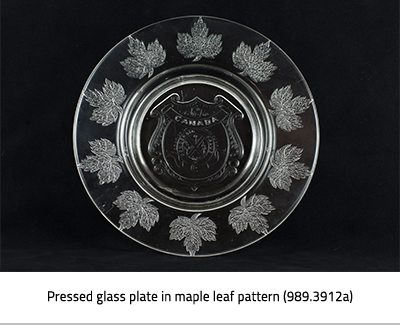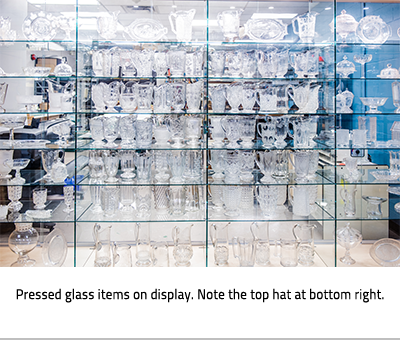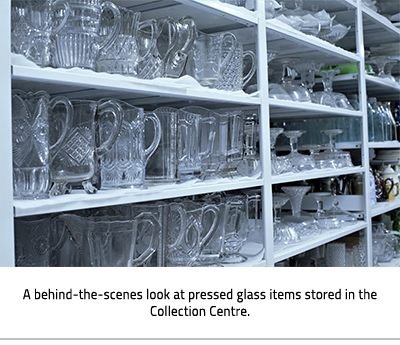Pressed Glass
You will always find a selection of pressed glass on display at Lambton Heritage Museum. Have you seen this collection before? One of the more curious pieces is a diminutive top hat. Its whimsical shape conjures up visions of white rabbits and magic tricks.
Glass has important qualities that make it a useful and desirable material. It does not conduct electricity; it is inert; and it transmits and focuses light. Glass is made from just three ingredients: sand, soda, and lime.
Five thousand years ago, ancient Egyptians created objects from molten glass. The technique of blowing glass using a blowpipe developed around 100 BCE. The process was laborious and required great skill. In the early 1800s, technological advances made it possible for unskilled labourers to quickly produce pressed glass objects using a mold. Under these conditions, glass production in North America blossomed.
The earliest Canadian glassworks opened in 1839. By 1900, many companies were in business. Their products included containers, window panes, lamp chimneys, and tableware. Pressed glass could be clear or coloured. Sets of tableware included different pieces such as goblets, plates, pitchers, and celery trays. Tableware patterns were created to suit every taste, from angular geometric to realistic images of people, animals, and objects.
Most pressed glass does not have a maker's mark. North American companies shared their molds and made the same patterns. This makes it difficult to tell where a particular piece was made. The maple leaf pattern is believed to be uniquely Canadian.
There are more than 600 pieces of pressed glass at the museum. The collection started with a donation by Fred Walden. It included the largest collection of pressed glass water pitchers in Canada. A further 200 pieces were donated by W.H. Hostetler. The richness of the museum's collection makes it an important resource for pressed glass enthusiasts.






 Subscribe to this page
Subscribe to this page